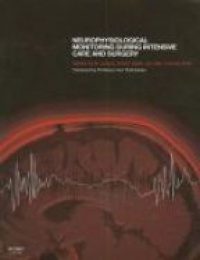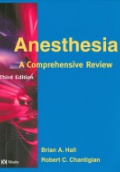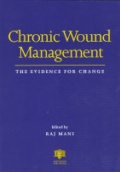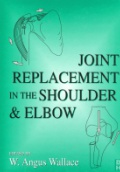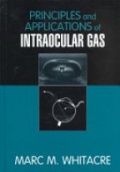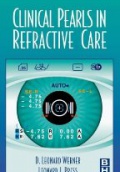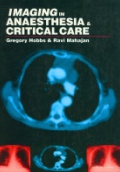
Neurophysiogical Monitoring During Intensive Care and Surgery
ISBN: 072343381X
Vydavateľstvo: Mosby
Rok vydania: 2006
Nárok na dopravu zdarma
The principal aim of neurophysiological monitoring is to prevent damage to the nervous system. Achieving this aim places great demands on both personnel and equipment. Traditionally the need for monitoring has been determined by clinicians (surgeons, anaesthetists, intensivists), and it has been provided by clinical neurophysiologists acting as visiting consultants in the operating theatre and intensive care unit. While there can be no doubt that neurophysiological monitoring is vital for the patient at risk of permanent neurological damage, monitoring presents challenging practical problems for anaesthetist and neurophysiologist. On the one hand, the neurophysiologist finds that the level of electrical interference from patient-connected anaesthetic and surgical equipment is an obstacle to recording low amplitude signals from the nervous system; on the other hand, the anaesthetist may be asked to avoid neuromuscular blocking drugs and powerful anaesthetic agents, so that the task of keeping the patient asleep and immobile is more difficult. These competing requirements should be approached in a spirit of cooperative teamwork and compromise. In the intensive care unit neurophysiological recordings can give diagnostic and prognostic information, and sometimes influence treatment. Prolonged monitoring of brain function allows clinicians to recognize spontaneous fluctuations of activity in comatose patients, the arousal responses of inadequately sedated patients, and the previously unrecognized incidence of epileptiform activity, particularly after head injury or neurosurgical procedures. For these reasons neurophysiological monitoring is being used more often in general as well as neuro-intensive care units. During surgical operations monitoring has been used at the request of the surgeon to detect impending damage to neural pathways, the onset of ischaemia, and the development of epileptiform discharges. In addition, the possibility of unintentional awareness has now become an important legal issue for anaesthetists, and any means of avoiding it is warmly welcomed. As a result of the great increase in power of readily-available computers in the 1990s, monitoring devices began to appear which extracted certain characteristics of the EEG or an EP, and in some cases compressed them into a single number thought to indicate clinically important states of the nervous system. Enthusiastic marketing ensured that anaesthetists and surgeons became interested in brain waves; now they had a box to tell the anaesthetist how close the patient was to awareness, or at least that was what the makers claimed it could do. As often happens following the introduction of new technology, clinicians were divided into the enthusiasts, the sceptics, and those waiting for compelling evidence before deciding one way or the other. According to the enthusiasts, EEG-monitored anaesthesia reduces the incidence of unintentional awareness, shortens recovery time, and makes anaesthesia a pleasanter experience for the patient, who is more alert and less nauseous postoperatively. The enthusiasts therefore advocate monitoring every anaesthetized patient with an EEG or EP index. Sceptics, on the other hand, point out that some anaesthetic agents do not affect the EEG or EPs in the expected manner, and so render the indices unreliable. Poor electrode application, external electrical interference, and muscle and movement artefacts produce misleading results. Because the indices are validated in normal subjects, they are less reliable, and in some cases useless, in the presence of epileptiform discharges or the EEG patterns produced by encephalopathies. The reluctance of some manufacturers to publish the algorithms underlying their indices has only served to heighten scepticism. The situation is not helped by the fact that few anaesthetists or surgeons are expert in neurophysiology, and merely follow the behaviour of an index number, without understanding the EEG or EP signal from which it is derived; some have even attempted to detect cerebral ischaemia with monitoring devices designed for prevention of awareness. Editors of journals therefore have a particularly difficult task in ensuring that published reports on surgery and anaesthesia monitored by EEG or EPs are of the same scientific standard as those on other subjects. While EEG and EP monitors undoubtedly have their place in the operating theatre, their precise contribution needs to be clarified. They must not be regarded as replacing conventional EEG or EPs, but merely as indicating the effect upon the brain of clearly defined and rigidly specified anaesthetic and surgical techniques. The inappropriate perioperative use of neurophysiological methods will only be avoided by educating anaesthetists and surgeons. They should not be expected to become neurophysiologists, but they should understand the physiology of neuronal activity, and the basics of signal acquisition and interpretation. In particular, anaesthetists should be encouraged to demand a high quality display of the raw EEG or EP along with a depth-of-anaesthesia index, just This book is derived from the two volumes entitled Clinical Neurophysiology (Binnie et al, 2003, 2004). We have compiled it using material extracted, rearranged and expanded from these parent volumes to cater for the particular needs of those working in neurophysiological monitoring. Such monitoring in the intensive care unit and the operating theatre has developed into a rapidly expanding subspecialty of clinical neurophysiology, to which many neurophysiologists and their technologists now devote a substantial part of their professional lives. At the same time, it was appreciated that colleagues in other specialties needed to understand what could - and, more important, what could not - be expected from monitoring. Also, in many hospitals, monitoring was being carried out by anaesthetists, surgeons, intensivists and others who lacked a firm grounding in the basics of clinical neurophysiology. There are several important differences between monitoring and other branches of clinical neurophysiology. Firstly, the principal aim of monitoring is to warn of deterioration, and thereby to avoid catastrophe, rather than to provide diagnostic information. Secondly, the population norm is of much less importance because the patient usually serves as his or her own control. Thirdly, monitoring has found applications in many apparently disparate branches of surgery and intensive care, and no one can claim to be expert, or even reasonably competent, in all of them. We have tried to keep these points in mind in preparing this book, and to provide sufficient explanation of the neurophysiological background for those entering the field from other specialties, including biomedical engineers and medico-legal experts as well as clinicians and clinical scientists. Nevertheless, in many cases the reader is referred to one or other of the parent volumes for an account of the basics; more detailed information on neurophysiological technology is given in Cooper, Binnie and Billings (2005), which provides a convenient companion to this present volume. We are acutely aware that neurophysiological monitoring is still developing rapidly, so that parts of the present volume may soon be out of date, if they are not already. Faced with such an actively developing subject, a printed book is perhaps not the best way of presenting information; an Internet version would provide greater possibilities of regular updating if the demand arises. Finally, we must reiterate the injunction with which the Editors of the parent volumes concluded their Preface. Although the information in this book is correct to the best of our knowledge, no one should attempt to carry out any of the techniques described without having undertaken adequate, recognized training, and without consulting up-to-date local, national and international safety regulations, and local, national and international recommendations on good practice.





